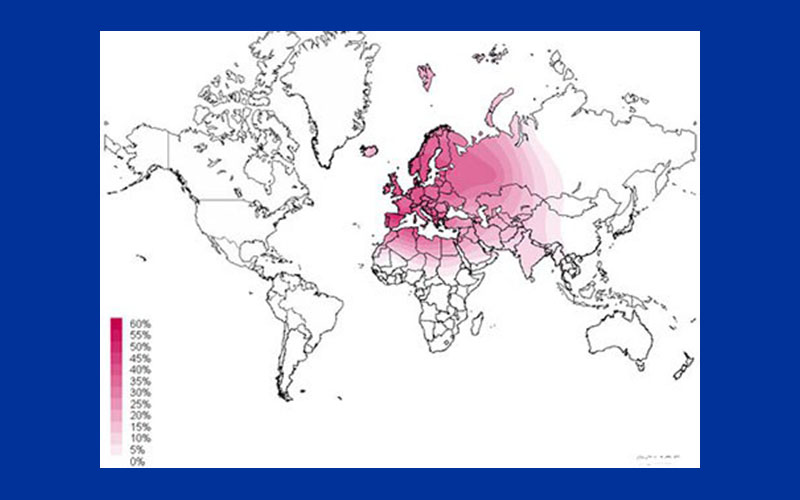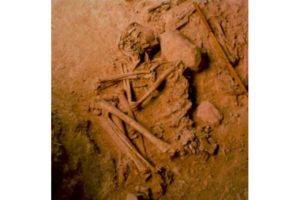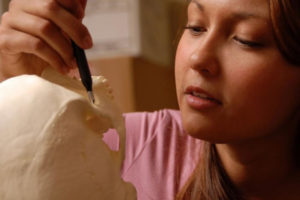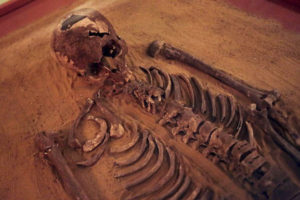August 2013. A new study of ancient DNA, taken from 7,500 year old skeletons in central Europe, has shown that there was a significant female DNA input into the European genome around the year 5,000 BC—a development which supports the Indo-European invasion theory of the populating of Europe.

The meaning of the study has been pulled out of proportion as a result of misguided media coverage that this was a “mysterious change in European DNA.”
In fact, the study, as published in the latest issue of Nature Communications, deals only with female DNA, and the mitochondrial Haplogroup H in particular. It does not reference male DNA at all.
The study, titled “Neolithic mitochondrial haplogroup H genomes and the genetic origins of Europeans” says that haplogroup H “dominates present-day Western European mitochondrial DNA variability (>40%), yet was less common (~19%) among Early Neolithic farmers (~5450 BC) and virtually absent in Mesolithic hunter-gatherers.”
In other words, haplogroup H was introduced after 5000 BC. This is the time when historical accounts—backed by archaeological evidence—indicates that there was a mass movement of people, commonly called Indo-Europeans, away from their heartland around the Black Sea or the plains of southern Russia.
The study continues, “Here we investigate this major component of the maternal population history of modern Europeans and sequence 39 complete haplogroup H mitochondrial genomes from ancient human remains.
“We then compare this ‘real-time’ genetic data with cultural changes taking place between the Early Neolithic (~5450 BC) and Bronze Age (~2200 BC) in Central Europe. Our results reveal that the current diversity and distribution of haplogroup H were largely established by the Mid Neolithic (~4000 BC), but with substantial genetic contributions from subsequent pan-European cultures such as the Bell Beakers expanding out of Iberia in the Late Neolithic (~2800 BC).”
Joint lead author Dr Paul Brotherton was quoted as saying that the “record of this maternally inherited genetic group shows that the first farmers in Central Europe resulted from a wholesale cultural and genetic input via migration, beginning in Turkey and the Near East where farming originated and arriving in Germany around 7500 years ago.”
There is therefore, no real “mystery” except perhaps that of widespread ignorance of the Indo-European, or Kurgan, theory of the origin of the Indo-Europeans.
Caution should however, be exercised before any specific conclusions be drawn from fresh research such as this. Haplogroups are divided into sub-groups, called subclades, and many of the subclades developed independent of one other, and are therefore not necessarily indicative of a direct common ancestry.
Haplogroup H is however the most common mtDNA haplogroup in Europe, and is found in approximately 41% of native Europeans. It is also present where (historically speaking) Indo-European peoples have traditionally thought to either have occupied, or settled, in ancient historical times. So it is that Halogroup U is, in other subclade variations, found in North Africa and the Middle East. Haplogroup H subclades appear in 20 percent of the population of the Near East and Caucasus, 17 percent in Iran, and less than 10 percent in the Persian Gulf, Northern India, and Central Asia.







